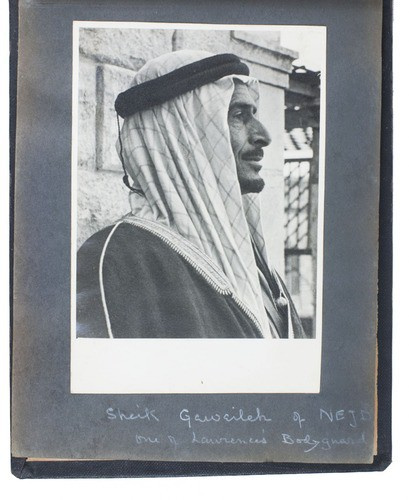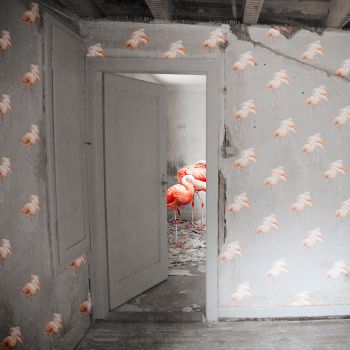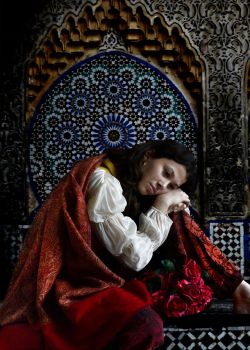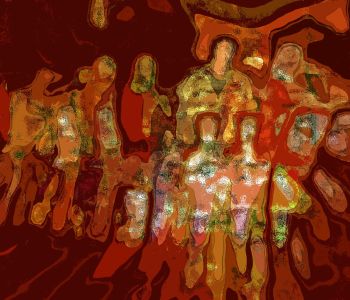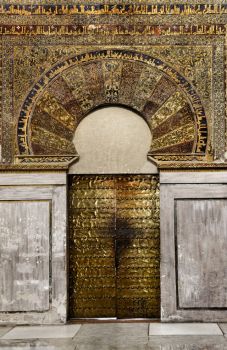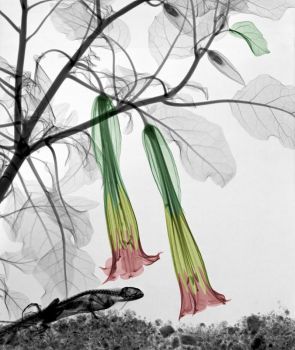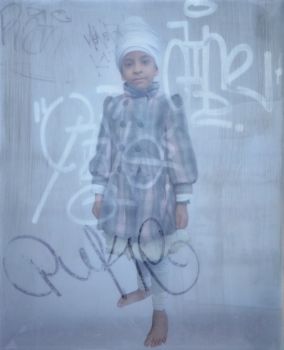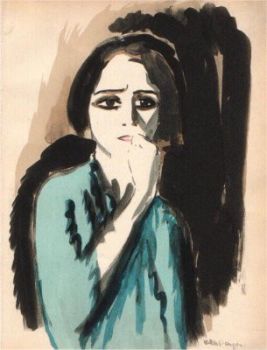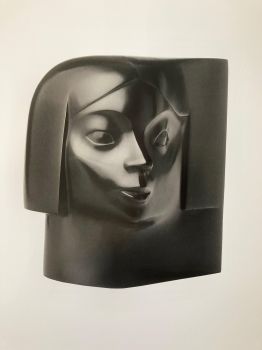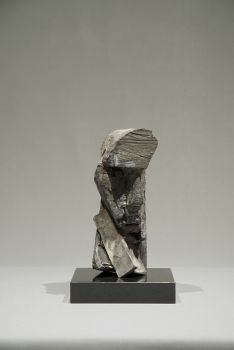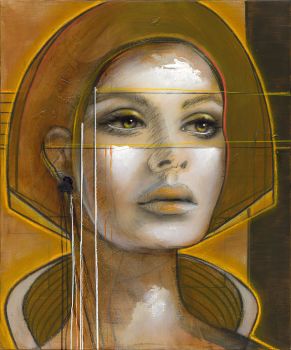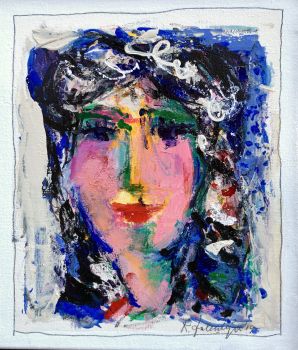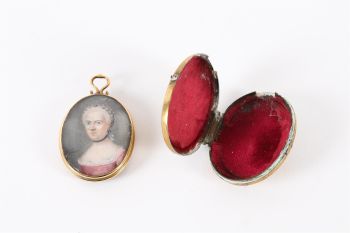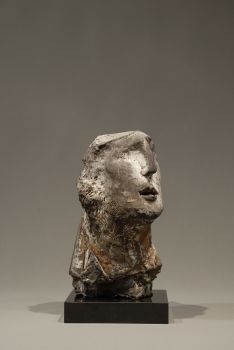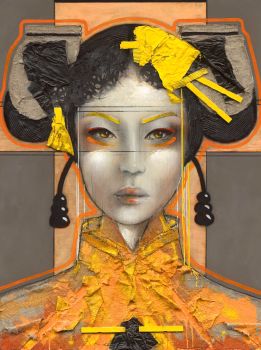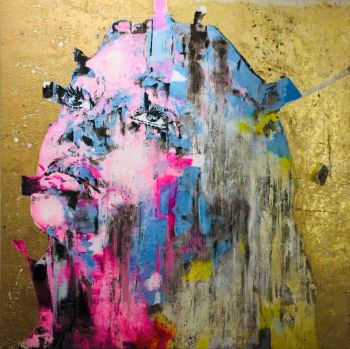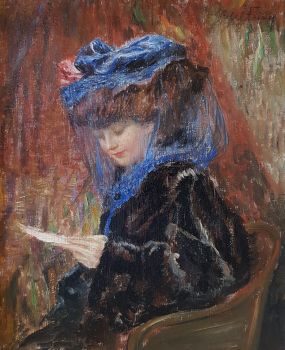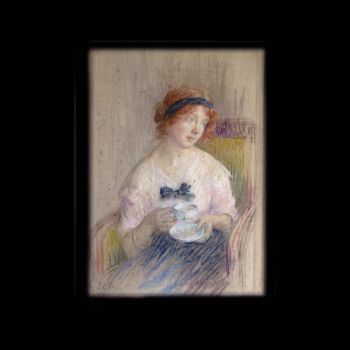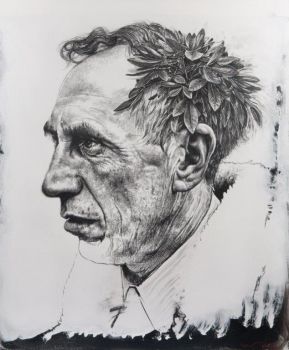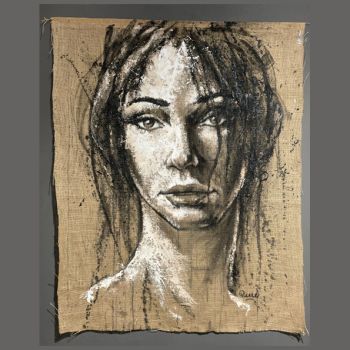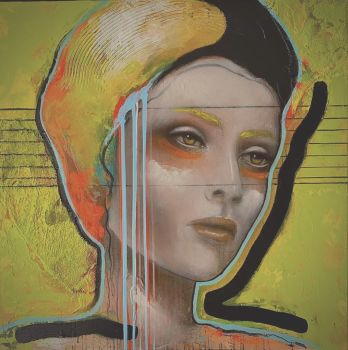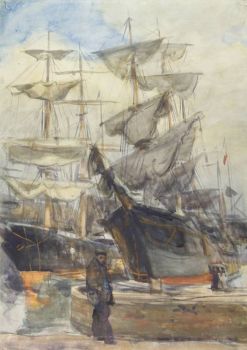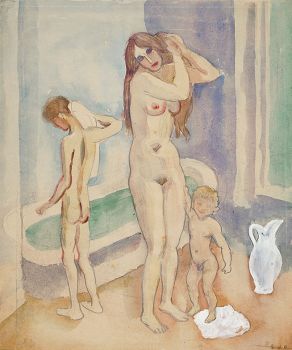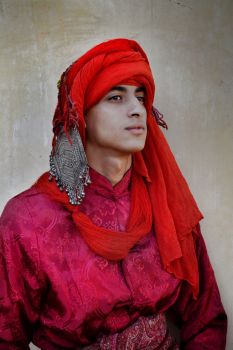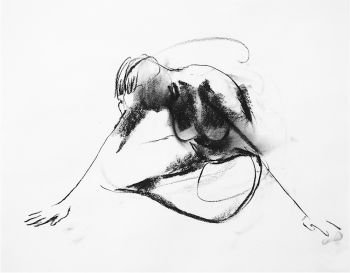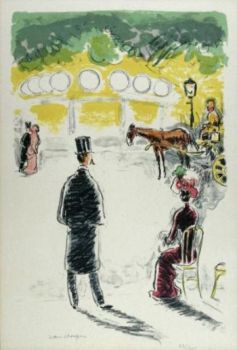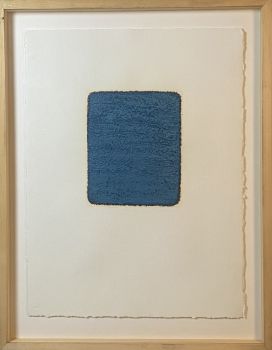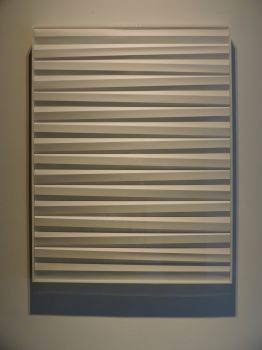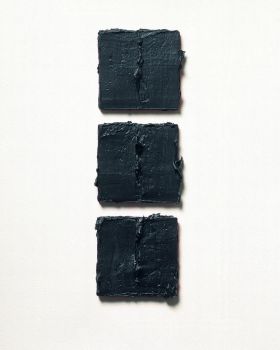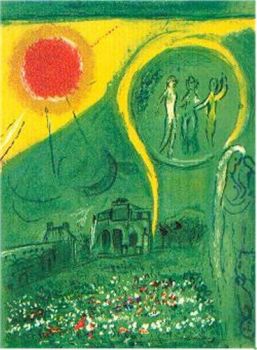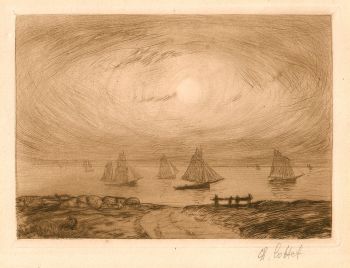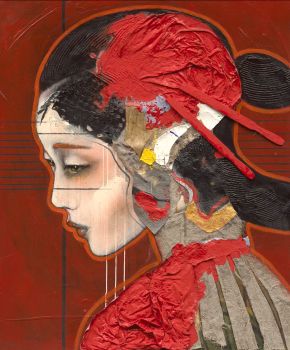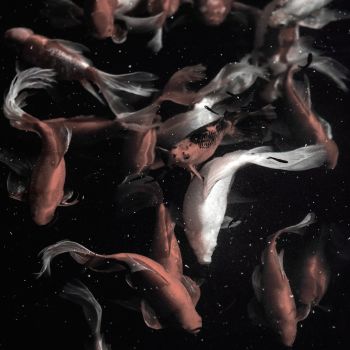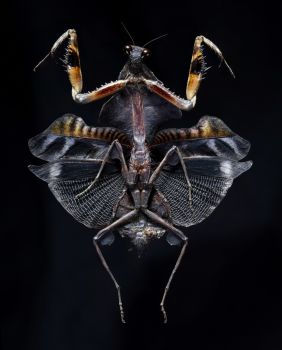14 photographic portraits of sheiks & tribesmen, by Lawrence of Arabia's Chief of Staff 1920
Walter Francis Stirling
PapierTirage photographique
17 ⨯ 12 cm
Actuellement indisponible via Gallerease
- Sur l'oeuvre d'artArab Types.
Syria, [ca. 1918-ca. 1921]. Oblong album (18 x 26 cm). An album containing 14 black and white photographic portraits (mostly about 17 x 12 cm) plus a smaller print of one. Mounted in a ca. 1930 album of black paper leaves (boards covered with black cloth).
Fascinating collection of 14 photographic portraits showing 13 sheikhs and tribesmen from several tribes in and around Syria, all with captions that usually give the subject's name and tribe. The photos, often highly expressive profile studies, were taken and assembled by Lt. Col. Walter Francis Stirling (1880-1958), T. E. Lawrence's Chief of Staff in 1918. The named tribes are the Shammar (nomadic Bedouins in northern Arabia, Syria and Iraq), Ruwalla (semi-nomadic Bedouins led by the Sha'lan family, also in northern Arabia and Syria), Hadidiyin (nomadic Bedouin sheep herders in Syria and northern Iraq), Walda (Kurds in Syria), Yazidis (Kurds in northern Iraq), Agaidat (Beduoins in Syria) and "Abu Klamin"[?] (not identified). The best known subjects are Fawaz al Sha'lam, Emir of Ruwalla (grandson of Nuri Sha'lan (1847-1842!), who commanded a large portion of the troops that entered Damascus with Faisal in 1918) and Daham al-Hadi, Sheikh of the Shammar. The latter is described as "Paramount Sheikh"of the Shammar (in Iraq), a title granted him by the British in 1920 that he lost when Faisal became King of Iraq in 1921.
One photograph slightly damaged, mostly outside the image area, but further in very good condition, with only an occasional small surface scratch or spot. Rare photographic portraits of sheiks and tribesmen in T.E. Lawrence's Damascus circle of friends and enemies. - Sur l'artisteWalter Francis Stirling (1880-1958) était un officier de l'armée, né à Southsea le 31 janvier 1880. Il était le fils unique et l'enfant cadet du capitaine Francis Stirling RN et de son épouse, Mary Caroline. Il a participé à la relève de Ladysmith, à l'action de Laing's Nek et aux opérations dans la colonie de la rivière Orange et le Transvaal pendant la guerre des Boers. En 1906, il a été détaché auprès de l'armée égyptienne et a passé cinq ans avec un bataillon arabe sur les frontières érythréennes et abyssiniennes. Pendant la Première Guerre mondiale, il sert à Gallipoli en Égypte et pendant la campagne de Palestine jusqu'à ce qu'il soit nommé officier en chef de Lawrence. En 1919, il est conseiller de l'Emir Feisal et Oddicer politique adjoint au Caire, puis gouverneur par intérim du Sinaï et gouverneur du district de Jaffa en Palestine. En 1923, il devient conseiller du roi Zog I. Il collabore avec Alexander Korda sur un film intitulé Seven Pillars of Wisdom. Pendant la Seconde Guerre mondiale, il sert à Damas et devient le correspondant du Times. Il a survécu à une tentative d'assassinat en 1949.
Artwork details
Catégorie
Sujet
Matériel & technique
Couleur
Related artworks
- 1 - 4 / 24
- 1 - 4 / 24
- 1 - 4 / 24

